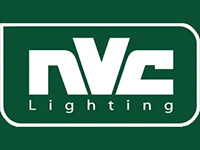Ensuring Fire Doors Achieve Their Life Safety Goals
 Simon Castle from BMTRADA accredited construction and refurbishment company, Chisholm & Winch, discusses the importance of compliant safety door installation in stadia.
Simon Castle from BMTRADA accredited construction and refurbishment company, Chisholm & Winch, discusses the importance of compliant safety door installation in stadia.
Since the Grenfell tragedy in 2017, the construction sector has taken significant steps to ensure fire safety is embedded in the specification process for all new buildings, leading to increased due diligence in material selection and construction best practice.
For stadia, the fire safety requirements are quite specific. Large occupancy capacity, limited ingress and egress points, lack of compartmentation and the difficulties of evacuating occupants unfamiliar with the layout of the building are just a few of the challenges.
And, of course, the fire safety considerations are not limited to crowds visiting the stadium on match days but include office, retail and catering areas too. For a growing number of modern stadia, there may also be other facilities, such as club museums, leisure facilities or even healthcare provision.
Meanwhile, the amount of plant required in a stadium, for lighting, pitch management, heating and cooling, also mean that there is a need to control the spread of fire from plant room areas.
Smoke detection and zoned fire alarms have an important role to play in providing an early fire warning, but passive fire protection is also essential, which includes the correct specification and installation of fire doors to inhibit the spread of fire and smoke.
Matching The Fire Door To The Location
The purpose of fire doors is to reduce risk to life by slowing down the rate at which fire, smoke and heat can spread, allowing time for evacuation, and limiting damage to the building and its contents. In a stadium, where lack of ventilation in corridors and tunnels can cause heat and smoke to intensify rapidly, an expert approach is required to plan the location of fire doors, specify them correctly and install them to the highest standards. Fire doors must always be installed and maintained by an accredited fire door contractor, whether they are being retrofitted as part of a safety upgrade, installed during a refurbishment or form part of a new build project.
Fire doors are rated by the amount of burn time they provide to protect people and assets on the opposite side of the door. So, an FD30 door slows the spread of fire for 30 minutes, while an FD60 door offers 60 minutes’, etc. The level of protection required for different areas of the stadium will depend on a variety of risk factors and the doors selected for each fire door location should meet the required level of protection but avoid over-specification because higher-rated doors are both more costly and take longer to fit. For example, we would expect an FD120 door for plant room areas, an FD60 door for public areas and an F30 door for back office locations.
It is also important to consider other performance criteria that may be required from the fire door specification. Along with the ability to prevent fire spreading, fire door ratings may also include protection from the spread of smoke, which is often spreads faster than flame and can hinder evacuation. Fire doors may also have insulation ratings to provide protection from the spread of heat, and stability ratings to indicate resistance to collapse due to heat. Of all these elements are important markers of how well the choice of fire doors will uphold the stadium’s fire safety and evacuation strategy.
All fire doors must be specially-manufactured, tested and certified, so the quality and performance of the door itself is never in question. No matter how well-made and appropriately specified the door, however, if it has not been correctly installed, the integrity of the fire-rating will be compromised.
Certified Skills And Quality Assurance
Correct installation and regular maintenance of fire doors are essential in ensuring in-situ performance matches product test data. An accredited fire door installer can help with product selection and advise on fire safe kick plates and push plates. In stadium environments, combining suitable fire doors with electronic automated opening integrated with the fire alarm via the building management system (BMS) is also advisable. This means that specific fire doors can be locked automatically, aligned to the fire alarm zone triggered, ensuring effective protection during evacuation, and can also be used in terror attack scenarios to enable areas of the stadium to be automatically locked down.
There are a number of fire door installation certification bodies, including FIRAS and BMTRADA, which has the Q-Mark Fire Door Installation Scheme, ensuring the installation team is suitably trained and competence is continually assessed.
Amongst the skills required for safe fire door installation is the correct use of fire mastic around the door frame and the use of intumescent foam to seal any air gaps around locks and hinges. The priority is to create a fireproof barrier that works with the fabric of the fire door to seal door openings against the spread of fire.
Inspection & Maintenance
Whether fire doors are being installed in new or established locations as part of a refurbishment, or there are existing fire doors in the stadium, routine inspections and maintenance are just as important for door sets as they are for fire extinguishers and alarms. Engaging an accredited installer for routine maintenance ensures any issues can be identified and rectified, ticking the box for compliance and making the building safer for all users, whether staff, players, fans or visitors.
Click the article to enlarge it.




















































